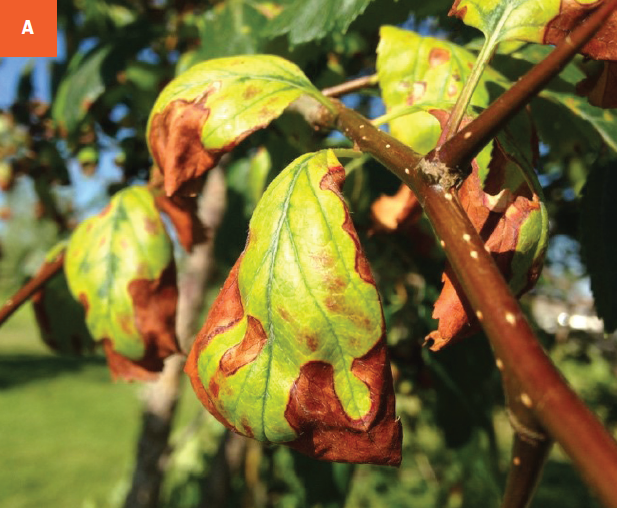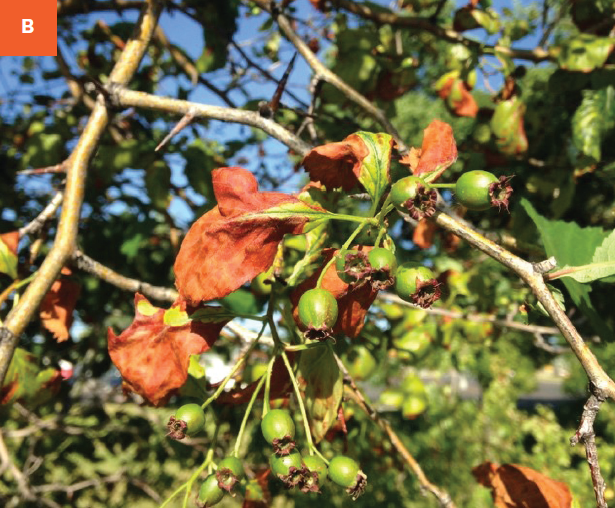Leaf Scorch
DAMAGE/SYMPTOMS Leaf scorch usually appears as brown necrotic areas on the margin of leaves which move from the leaf tip downward and from the margins inward. Scorch can cause leaves to turn dark brown to black and fall off prematurely.
OCCURRENCE Scorch is a physiological disorder. Adverse environmental conditions can result in leaf scorch. For instance, hot summer days will cause many trees, shrubs, flowers, and vegetables to develop dry, brown leaf margins. Windy conditions that reduce leaf moisture also contribute to leaf scorch and dehydration. Minimal soil moisture in the winter and spring will contribute to leaf scorch development.
SUSCEPTIBILITY/TOLERANCE Aspen, maple, ash, oak, linden, birch, and horse chestnut are most susceptible to leaf scorch. Scorch can affect a variety of plant species.
MANAGEMENT Leaf scorch is irreversible; however, proper water management may help the plant recover. To prevent scorch, water more deeply and less often to ensure that the water is deeply penetrating the soil, for deep root development. Mulching around the tree can also help conserve soil moisture, improving the tree’s condition. Winter watering is another way to help prevent scorch.
A Brown necrotic areas on the margin of leaves. B Leaf scorch can cause leaves to turn brown and prematurely fall.


